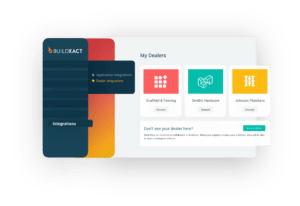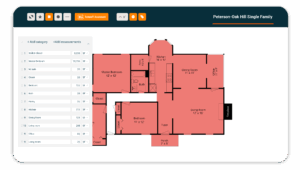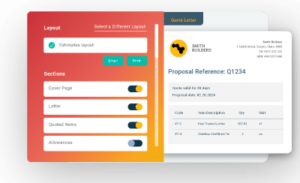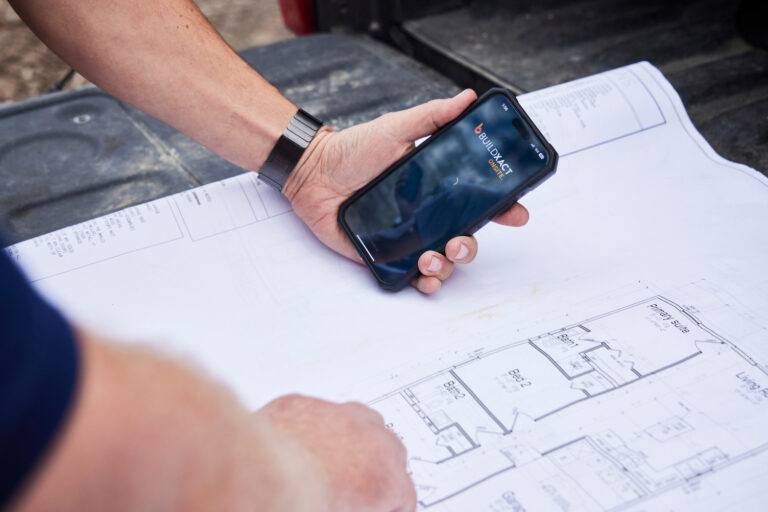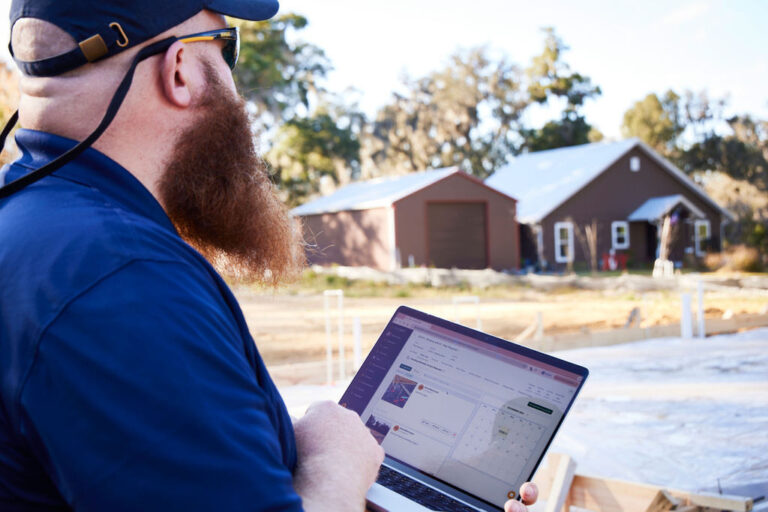You know home construction projects are a major undertaking. Whether a house being built from scratch, or renovations or extensions to an existing property, home construction requires careful planning.
This includes budgeting. Without carefully budgeting a large home project, unforeseen expenses and additional scope inevitably cause you to lose financial control. When you budget construction projects effectively, you provide certainty and keep costs within scope for you and your homeowner.
Understanding the basics of a construction budget
In simple terms, a construction budget provides a financial plan showing estimated direct and indirect costs associated with a construction project. It typically includes anticipated expenses for labor, materials, equipment, permits, and the like.
Typically, the project manager prepares the budget with input from all the professionals involved in the project. This often includes architects, engineers, electricians, plumbers and other contractors.
The budget highlights three notable points:
- The direct costs of the project. This means equipment, labor and material costs;
- The indirect costs, or overhead, which include project operation costs, construction organization costs and any pre-construction costs;
- Profit. This factors what the construction business will make from the project to earn a reasonable profit for the business and ensure all employees, including you, are paid a fair wage for your time.
A budget should be as accurate as possible. Of course, situations will typically arise during the construction process that change costs. A budget adjusts accordingly via change orders to ensure the project doesn’t excessively exceed the original estimate.
Learning the importance of construction budgeting
First and foremost, a construction budget provides transparency. Because money is never unlimited, a construction project budget begins with an accurate, itemized estimate that you quote to the customer before commencing work. All must agree and sign off to avoid any disputes about the budget once you’ve begun work.
Because a proper construction budget contains a granular level of detail, you can see if the project lies beyond the means of the client, and the detail allows you and the customer to identify, cut or reduce spending as needed. The construction budget also ensures your team takes the time to figure financial feasibility without cutting quality and workmanship.
Finally, the construction project budget limits waste. With materials, required equipment and labor all accounted, the project can run with maximum efficiency.
Creating a construction budget
With the right software platform, building a construction budget is an involved, but not difficult, process. Let’s review:
Project research and analysis
First, define the scope of the project. At this stage, you’ll also appoint the person that handles the budget and determines if funding has been secured.
This stage will also involve trips to the site to better understand context. For example, if the construction site isn’t large enough to allow a particular vehicle to reach the site, you may need to find an alternative. There may also be particular safety challenges for the site that might require additional measures. Also, at this time, you’ll conduct soil tests and other surveys to better understand what type of foundation or wastewater system a project requires.
Project development
At this point, you will start to engage with the client, their architects, design consultants, contractors, and other any other stakeholders involved. With their input, you will scope out the project and start to determine estimated construction costs. On any given project there will be options, in terms of materials and approaches to the work, so bringing all decision-makers into alignment regarding the approach, and subsequent costs, ensures an accurate construction project budget.
Pre-construction and documentation
At this stage, a fully itemized budget takes shape that accounts for the estimates of all construction tasks. These tasks must include quotes from the contractors and third parties that you’ll be using to ensure you cover all expenses. Construction management software does a superior job storing all documentation online for all to see.
Estimates should be reviewed by all stakeholders before you present them to the customer in a quote. Once the customer approves the quote, it’s important to create a library of all content associated with the project, including permits, regulations, contracts, deliverables, change orders and the budget itself. This should be accessible to all key stakeholders throughout the project and referred to repeatedly to ensure that it stays on track. Again, construction management software provides a simple way to do this.
Direct costs to include in a construction budget
To create an accurate estimation of all the costs involved in a construction project, don’t forget the many obvious items that my slip your mind and take time to find the less apparent tasks.
Materials and equipment
Materials and equipment represent some of the most obvious costs. While knowing what materials a project requires seems straightforward, keeping up with their costs in an uncertain economy can be challenging; so it’s important to collaborate with established dealers who know current market conditions and can advise on quantities. Software can take collaboration online for quick conversations.
Labor
Labor includes the cost of employees, subcontractors and any people you might need to pay to be on site. The costs involved follow the relevant regulatory obligations around wages and contracts and must be included to accurately calculate a construction budget. Remember, labor to perform specific tasks does not include the salaries of company management.
Indirect costs to include in a construction budget
Project management
Successful projects require more than labor and material. Back-end costs that go into the management of a construction project include on-site office personnel, internet connection, project management software, office supplies and utilities.
These should all be factored into a construction project budget by factoring in sufficient markup; otherwise, they’ll significantly eat into your net profit margins. Affordable construction management software should offer multiple project management features to help you set the right markup and decide the best way to present this to the homeowner.
Other back-end costs to consider include:
Insurance and bonds
Because construction environments have health and safety risks, construction companies must carry insurance by law, and insurance packages for work sites can come at a significant premium (one that you will be glad to have paid should something happen on site).
Taxes
Depending on the nature of the construction project, there might be local and state taxes applicable that need to be considered in the construction budget.
Utilities
Additionally, every worksite requires water, electricity, waste disposal and other such utilities. Calculating these can be more difficult, based on the scope of the project and its demands. However, if it’s not accounted for in the construction budget, it becomes something that consumes profit margins.
Unforeseen costs
Every construction project will run into unexpected costs. Equipment might break down, or materials might become damaged. Workers might get sick or the weather might cause delays, leading to a longer (and therefore more expensive) project.
Also, the client might change their mind about materials. Typically, a well-planned construction budget will account for these impossible-to-predict events with a buffer of between 3 and 10 per cent to act as a contingency budget.
What to avoid when developing a construction budget
The biggest mistake that you can make with planning construction projects is making inaccurate estimates. Even the most experienced project manager can make mistakes if they’re not careful to follow estimate best practices.
Be careful to not quote too low. Yes, a percentage of customers will only look at the lowest quote, but this can impact the quality of the work that you do and harm customer satisfaction and your company’s long-term reputation.
Another very common mistake is simple spreadsheet errors. One of the reasons that more project managers turn to dedicated construction budget software is that it is very easy to enter the wrong number into a spreadsheet or not properly understand the formulas behind them. Those manual errors can impact the entire project’s ultimate profitability.
Finally, many construction companies struggle with communication, both with the client and third-party partners. Being able to present information, such as what is found in the construction budget, in a clear and transparent manner is important. Consequently, all project managers should use modern software tools to communicate with customers online.
How budgeting a construction project can ensure profitability
A full one in five projects go over budget. Who bears that cost can vary. Sometimes it will be the client and sometimes the construction company.
At times, the reasons for this will be totally beyond the control of the project manager. The recent pandemic, for example, disrupted a lot of projects. A string of bad weather can slow down a construction project by preventing key steps beyond the schedule’s plan. However, a well-drawn constriction budget that has contingencies can limit the impact of these events and ultimately maintain profitability.
Cost control
Scheduling
Don’t assume that the project’s budget is sufficient by itself. For project managers, the work just starts here. It’s important to also have a construction schedule and plan, highlighting when activities will take place. A schedule highlights how long you need contractors and specific employees on-site.
One of the biggest benefits of effective construction budget software is its ability to build Gantt Charts for the project. Gantt Charts effectively combine the construction schedule with the budget. This is done by breaking the project down into clear steps and milestones. This allows the project to be run efficiently, and consequently you keep the overall cost of the project under control.
The profitability of any given construction project hinges on the proper allocation of resources. This means having contractors on site only when needed. It also means having the right materials, in the right quantities, for each stage of construction ready to go when needed. This is where the visual Gantt Charts that construction budget software can produce play an important role.
Accounts for Overheads
Far too often, the impact of overheads, or soft costs, on a project causes a project to lose money. Without a construction budget, it becomes easy to see a project in terms of materials and contractors, without accounting for all the expenses that constitute the running of a business. Sometimes soft costs are unplanned indirect costs.
Allowance for incidental costs
As mentioned, incidental costs can creep up. They could be as simple as meals provided to workers on a particularly long day, to the cost of flights to meet with a key supplier or partner. Again, these costs can rapidly eat into the margins of a project. While you might not want to necessarily bill the client for them directly, they should feature in the construction budget, so that you have some certainty about what you need to quote for the overall project.
Accurate bidding
Accurate bidding means everything to building a sustainable, profitable construction business. Bid too low and your business will walk away from a project in no better position than it went into the project (or, worse, loses money on it). Bid too high and clients will overlook you for a competitor. Finding the “Goldilocks” bid for any given project means having a systematic way to create accurate construction budgets time and time again.
Using software to create budgets in a timely, professional manner
If you are searching for a way to consistently draft, maintain and share construction project budgets, sign up for a risk-free trial of Buildxact.
Want more information? Speak to a Buildxact team member by booking a Buildxact demo.






